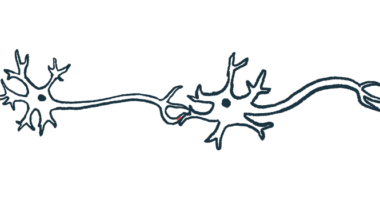Research sheds new light on ALS gene mutation
C9ORF72 splicing discovery points to potential therapy targets

Researchers at Yale School of Medicine said they’ve solved a longstanding mystery of how mutations in the C9ORF72 gene, a common genetic cause of amyotrophic lateral sclerosis (ALS), may lead to toxic proteins.
The findings suggest a new approach that could lead to the development of targeted therapies, the researchers said.
Their study, “Aberrant splicing exonizes C9orf72 repeat expansion in ALS/FTD,” was published in Nature Neuroscience.
The discovery centers on mutations in C9ORF72, which are the most common genetic cause of ALS in European and North American populations. Although the causes of ALS aren’t fully understood, genetic mutations are known to be behind at least some cases of the disease.
Within the C9ORF72 gene, there’s a region where a specific genetic sequence is normally repeated about a dozen times, but in ALS-causing mutations, the sequence is repeated hundreds of times. Researchers have known that this expanded genetic repeat leads to the production of toxic proteins that are thought to drive nerve cell damage in ALS.
ALS gene mutation contains a splicing puzzle
Genes are made of exons — the sections that provide instructions to make proteins — and introns, which are regions that don’t code for proteins but help regulate gene activity. Within a cell’s DNA, genes contain exons interspersed with introns.
When the gene is read to make protein, the entire gene is copied over into a temporary molecule called messenger RNA (mRNA). The mRNA then undergoes a process called splicing, where the introns are removed and the exons are strung together to form a sequence that is ultimately used to make proteins.
The ALS-causing expansion mutation in C9ORF72 is located in an intron, which should normally be removed by splicing before the gene’s mRNA is used to make any protein. And yet, it’s been established that the mutation does lead to the production of abnormal proteins.
Although these mechanisms are well established, they’ve led to a conundrum for researchers: How could a mutation in an intron, a part of the gene that should be discarded, lead to a toxic protein?
“These repeat proteins can interfere with a wide range of cell functions,” Suzhou Yang, a PhD student in Yale’s interdepartmental neuroscience program and lead author of the study, said in a university news story. “But it has been a mystery how an intronic sequence, which is usually cut out and degraded, can be translated into these toxic proteins.”
Mystery solved
The scientists figured out an answer to this puzzle. They determined that ALS-causing mutations in the C9ORF72 gene cause problems with the molecular machinery that normally controls mRNA splicing. As a result, part of an intron — including the mutation — instead turns into an exon and is included in the mature mRNA used to make protein.
Junjie Guo, PhD, associate professor of neuroscience at Yale and senior author of the study, said this shows that “we must be cautious about categorizing mutations simply according to existing gene models, because it turns out, an intron does not always stay an intron.”
“Part of the reason why it took us so long to find this is perhaps our static way of thinking about the genome and gene expression,” Guo said. “But once we saw the RNA sequence, this abnormal process immediately jumped out to us.”
The discovery opens potential avenues for therapy, the researchers said. For starters, they showed that they could reduce expression of the mutant mRNA by using a small piece of genetic material to target a sequence that’s only present when the intron is included.
This allowed the treatment to target only the faulty mRNA without affecting the normal one, enabling cells to keep producing the healthy version of the protein.
“From the therapeutic perspective, we believe that this is a broadly applicable strategy of identifying unique sequences that could allow us to design therapeutic candidates to selectively target the disease-causing RNA,” Guo said.
The scientists hope to learn more about how mutations disrupt splicing to change an intron into an exon. Once those mechanisms are more fully understood, it may be possible to target them therapeutically.
“It is most likely that there are additional cell-type-specific splicing regulators that determine the incorrect splice sites,” Guo said. “If we can identify these regulators, they could become potential targets for manipulating and reversing these abnormal events.”








